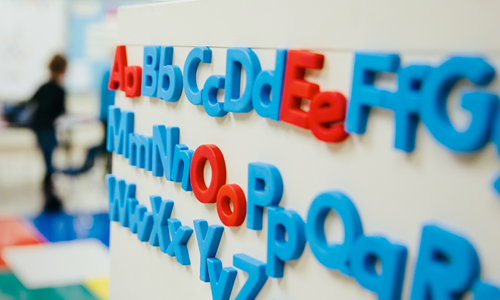
Between 1990 and 2015, the proportion of eighth-graders in United States public schools enrolled in algebra or a more advanced mathematics course more than doubled to 43 percent. This increase was particularly pronounced in California, where eighth-grade algebra enrollment rates peaked at 65 percent in 2013, in the wake of a decades-long policy effort to make algebra the default mathematics course for eighth-graders.
The push to enroll more students in eighth-grade algebra is predicated on the idea that exposing students to more advanced material accelerates their skills acquisition and improves their labor market outcomes. Yet evidence on the effects of course acceleration is mixed: All students can thrive in well-designed algebra classrooms. However, quasi-experimental evaluations suggest that, on average, algebra policies administered at scale have modest or even negative average effects on students’ mathematics achievement.
The algebra trend nationwide
In light of mixed research findings, many states and districts across the country are rethinking their push to enroll more students in eighth-grade algebra. Some districts are trying to push as many students as possible into the accelerated course. Other districts—San Francisco and New York City in particular— have gone so far as to eliminate eighth-grade algebra.
Since we know that eighth-grade algebra has historically been an important step on the way toward high school calculus and college STEM majors, we have searched for more clarity on not only how access can vary across students and schools but also on the effects access to the course can have on student outcomes.
The algebra trend in California
With the exception of San Francisco, as noted earlier, California previously led efforts to provide algebra to nearly all students by the end of eighth grade for the better part of two decades. I, along with a few colleagues, studied how schools responded to this effort to enroll more students in algebra while embedded in a complex set of accountability, institutional, technical, and internal political pressures.
As one could imagine, schools’ responses varied from “detracking” and providing algebra to nearly all of their students in eighth grade to “tracking up” and creating a new accelerated pathway for students to complete geometry by the end of eighth grade. These patterns correlated with a school’s socioeconomic advantage, effectively maintaining persistent inequalities: “detracking” occurred primarily in disadvantaged schools, while “tracking up” occurred primarily in advantaged schools.
The benefits of taking algebra in eighth grade
In a 2020 analysis investigating whether enrolling in eighth-grade algebra leads to better student outcomes, a different set of colleagues and I studied the effects of eighth-grade algebra across several hundred California middle schools. Our analysis relied on the fact that many schools place students into eighth-grade math classes based largely on their seventh-grade test scores. We also saw that schools used different seventh-grade math test score cutoffs to decide which students should take algebra in eighth grade. By comparing students just above that threshold with their peers just below, we isolated the effect of eighth-grade algebra on students’ later educational outcomes, including achievement and course-taking.
We found that the average effects of eighth-grade algebra enrollment on students’ advanced math course enrollment are substantial and positive, while the average effects on mathematics and English language arts (ELA) test scores are modest.
Enrolling in eighth-grade algebra boosts students’ enrollment in advanced math in ninth grade by 30 percentage points and eleventh grade by 16 percentage points. Math scores in tenth grade rise by 0.05 standard deviations. Encouragingly, we find that women, students of color, and English language learners benefit disproportionately from accelerated coursework.
The downsides of eighth-grade algebra
Importantly, however, we also found substantial cross-school variation in the achievement effects of eighth-grade algebra. For example, even though we found that the average effects of algebra were positive, we also found that in 38 percent of the schools and years for which we have data, placement in eighth-grade algebra significantly hurt students’ math achievement.
This variation puts earlier and mixed findings about the effects of eighth-grade algebra in a new light, suggesting that this one treatment—a seat in an eighth-grade algebra class—might have very different consequences in different educational contexts.
Moving forward to support middle school math students
Our findings suggest that some of this cross-school variation is predictable: the benefits of eighth-grade algebra are substantially larger in schools that set their eligibility threshold higher in the baseline achievement distribution. The results from both studies suggest a potential tradeoff between increased access and rates of subsequent math success.
It probably won’t surprise teachers to learn that the same class can have vastly different consequences in different contexts. Teachers know that teaching style, student readiness, textbook quality, and the sorts of supports they receive from their school all influence the extent to which students struggle or thrive in a given course. But educational researchers and policymakers may not know enough about this. We’re used to asking about what works to improve schools. These findings challenge us to think more systematically about what works, but also where and for whom.






